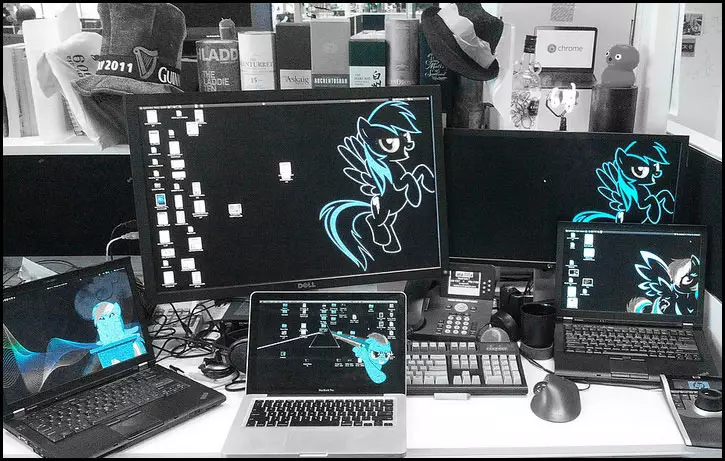
See also: How to convert from FAT32 to NTFS without formatting
What is a file system and what problems with it may be related
The file system is a way to organize data on media. As a rule, each operating system uses its file system, but can use several. Given the fact that only binary data can be recorded on hard drives, the file system is a key component that provides a translation from the physical entry into files that can be read. Thus, when formatting the drive in a certain way with a specific file system, you decide which devices (as even your radio tape recorder has a kind of OS) will be able to understand what it is written on a flash drive, a hard disk or other accumulator.

Many devices and file systems
In addition to well-known FAT32 and NTFS, as well as somewhat less familiar to the ordinary user HFS +, EXT and other file systems, there are still dozens of different FS, created for various devices of a particular purpose. Today, when most people have at home more than one computer and other digital devices on which Windows operating systems can be used, Linux, Mac OS X, Android, and others, the question of how to format the USB flash drive or another portable disk so that it He read in all these devices, is quite relevant. And with this problems arise.
Compatibility
Currently, there are two most common file systems (for Russia) - this is NTFS (Windows), FAT32 (Old Windows Standard). Mac OS and Linux file systems can also be used.It would be logical to assume that modern operating systems will work with each other's file systems by default, but in most cases it is not. Mac OS X cannot record data to a disk formatted in NTFS. Windows 7 does not recognize HFS + and EXT discs and either ignores them or reports that the disk is not formatted.
Many Linux distributions, such as Ubuntu, support most default file systems. Copy from one system to another is the usual process for Linux. Most distributions support HFS + and NTFS "from the box" or their support is set by one free component.
In addition, gaming consoles, such as Xbox 360 or PlayStation 3 provide only limited access to specific file systems, and allow only data from the data from the media USB. To familiarize yourself with what file systems and what devices are supported, take a look at this table.
| Windows XP. | Windows 7 / Vista | Mac Os Leopard | Mac OS Lion / Snow Leopard | Ubuntu Linux | PlayStation 3. | Xbox 360. | |
| NTFS (Windows) | Yes | Yes | Only reading | Only reading | Yes | No | No |
| FAT32 (DOS, Windows) | Yes | Yes | Yes | Yes | Yes | Yes | Yes |
| ExFat (Windows) | Yes | Yes | No | Yes | Yes, with EXFAT package | No | No |
| HFS + (Mac OS) | No | No | Yes | Yes | Yes | No | Yes |
| EXT2, 3 (Linux) | No | No | No | No | Yes | No | Yes |
It is worth noting that the tables reflect the options for working with default file systems. Both in Mac OS and in Windows you can download additional software that will allow you to work with unsupported formats.
FAT32 - long-existing format and, thanks to this, almost all devices and operating systems fully support it. Thus, if you format the flash drive in FAT32, it is almost guaranteed, reads anywhere. However, there is one important problem with this format: limiting the size of a separate file and a separate volume. If you need to store, write and read huge files, FAT32 may not come up. Now more about limitations on size.
File Size Limitations in File Systems
The FAT32 file system was developed quite a long time and is based on previous versions of the FAT, originally used in the DOS OS. There were no discs with today's volumes at that time, and therefore some prerequisites in order to provide support for files with a size of more than 4GB file system. To date, many users have to deal with problems because of this. Below you can see a comparison of file systems based on the sizes of supported files and partitions.
| Maximum file size | Size one section | |
| NTFS | More than existing discs | Huge (16EB) |
| FAT32. | Less than 4 GB | Less than 8 TB |
| ExFat. | more than discs on sale | Huge (64 zb) |
| HFS +. | More than you can buy | Huge (8 EB) |
| EXT2, 3. | 16 GB | Big (32 TB) |
Modern file systems have expanded the limitations on the size of the files to the limits that are still difficult to imagine (let's see what will happen in 20 years).
Each new system wins in FAT32 in size from individual files and a separate disk partition. Thus, the Age FAT32 affects its use for various purposes. One of the solutions is the use of the EXFAT file system, the support of which appears in many operating systems. But, anyway, for the usual USB flash drive, if it does not store files of more than 4 GB, FAT32 will be the best choice, and the flash drive will be read almost anywhere.
